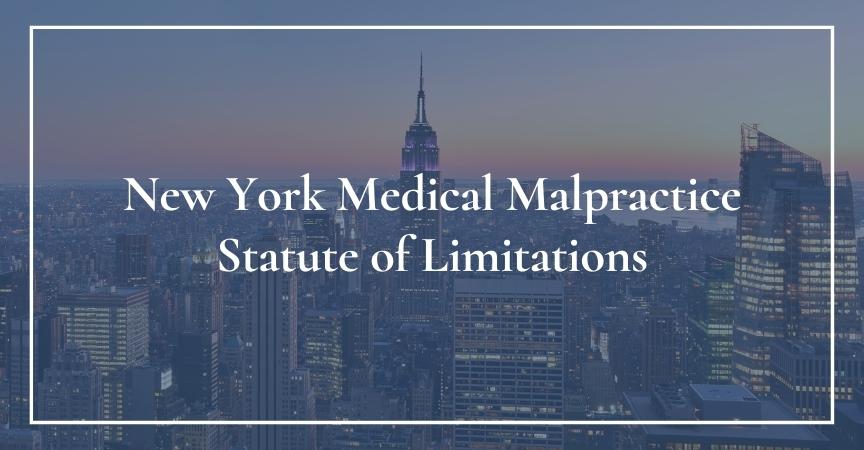Medical malpractice lawsuits are notoriously complicated in any state, and New York is no exception. In addition to amassing evidence and paperwork, the plaintiff and their representation are also required to follow specific protocols that include strict time restraints on filing.
As medical malpractice laws can vary greatly from state to state, it is especially important for a plaintiff to be aware of the specific deadlines, called statute of limitations, that apply to their case in New York. The best way to ensure a successful filing is to discuss your case with a highly experienced medical malpractice attorney who can serve as your advisor and advocate throughout the lawsuit process and ensure that all necessary procedures are followed in accordance with state law.
Medical malpractice occurs when a doctor, nurse, or other healthcare professional or institution fails to provide their patient with the appropriate standard of care expected for that particular procedure, resulting in the injury of the patient, or possibly wrongful death.
What is a Statute of Limitations?
The term, “Statute of Limitations” refers to a state law that sets a deadline for legal action to be taken in a specific case. Should a case be submitted outside this timeframe, it can be dismissed in court. There are different deadlines based on the type of claim you are filing, and in which state you are filing.
New York State Statutes for Medical Malpractice
New York’s medical malpractice statute of limitations is two and a half years from the time of the incident or omission or the last treatment where there was continuous treatment for the same illness, injury, or condition.
Exceptions to New York state Statutes for Medical Malpractice
New York has several exceptions that apply to the medical malpractice statute of limitations. These variations to the law can drastically impact the validity of your case, making it important to follow the guidance of an attorney.
-
Discovery of a Foreign Body
If a patient finds that a foreign body has been left inside their person, for example, an instrument or gauze during surgery, they have 1 year from the time the foreign body was discovered or the facts available made it reasonable to discover, whichever is earlier.
-
Negligent Cancer Diagnosis
When the action is based on negligent cancer or tumor diagnosis, or the failure to diagnose cancer or a tumor, the claim must be filed within two and half years from when the person realized or should have realized that the negligence occurred, or from the date of the last of continuous treatment. “Lavern’s Law,” named for Lavern Wilkinson and signed into effect in 2018, also establishes a seven-year limit from the time of the omission or act.
-
Minors
In a medical malpractice case, the statute of limitation for a child may be tolled until they turn 18, but may not exceed 10 years after the alleged malpractice.
-
Insanity
The state of New York does not hold a statute of limitations against a person who is not sane. The two-and-a-half-year statute begins on the date that person is considered legally well.
-
Wrongful Death
If the alleged negligent act or omission results in wrongful death, the family of the decedent has two years from the date of the person’s death to file a wrongful death claim.
How We Can Help
If you believe that you or a family member has received negligent medical care that resulted in an injury, it is important to contact an attorney immediately to begin an investigation. We can evaluate your case and guide you in the best next steps for your situation.
A top-ranking firm in New York, the team of medical malpractice attorneys at KDLM has experience handling cases involving birth injuries, surgical errors, medication errors, wrongful death, and missed or incorrect diagnosis, among other forms of medical negligence and malpractice. KDLM has been named the number-one law firm in the Medical Malpractice Hall of Fame, obtained the second and third largest medical malpractice verdicts in New York history, and had the largest settlement against the Health & Hospitals Corporation.
Contact our team of medical malpractice attorneys to discuss your case and start your road to recovery.

